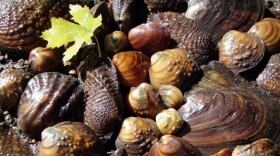If you’ve ever spent a cool morning at the edge of a lake with a fishing pole in hand, there’s a good chance you’ve used a Canadian Nightcrawler as bait. Fat, wriggly, and irresistible to fish, these worms are sold by the dozens at bait shops across North America. But while they’re famous among anglers, few people realize that Canadian Nightcrawlers—Lumbricus terrestris—have a fascinating biological story all their own, one that stretches across continents and ecosystems.
Canadian Nightcrawlers are not actually native to Canada or even North America. They originated in Europe and arrived in North America hundreds of years ago, likely in soil with early settlers who were transporting plants. Since then, they’ve established themselves in a wide range of environments and are especially successful in cooler, moist soils.
Unlike red wigglers or other smaller worm species, nightcrawlers are difficult to propagate in containers. They do very well in high organic, and worm farmers have discovered that alfalfa fields spread with cow manure produce some of the highest densities of worms. The Canadian Nightcrawler industry is housed mostly in southern Ontario and is an approximately 200-million-dollar industry that relies on hand-picked worms from a broad stretch of habitat types.
What makes these earthworms so effective in the wild—and so appealing as bait—is their size and behavior. Adult nightcrawlers can reach up to 10 inches in length and are famous for their strength and elasticity. As their name suggests they’re primarily nocturnal, emerging from burrows at night to feed on decaying organic material on the surface, which they drag back underground. Harvesting worms is easiest at night after a light rain. Armed with a bucket full of dirt and a headlamp, worm hunters just pluck exposed worms from the damp substrates.
Nightcrawler foraging behavior helps to aerate soils and facilitate nutrient cycling, which can benefit some ecosystems. But their role in North American forests is complex. Canadian Nightcrawlers are considered an invasive species in many parts of the northern U.S. and Canada. These regions were worm-free following the last Ice Age, meaning the ecosystems evolved without them. The introduction of nightcrawlers disrupted the delicate balance of these environments. In hardwood forests, for example, their feeding reduces the layer of leaf litter that native plants, fungi, and animals rely on. This can lead to shifts in plant communities and affect everything from soil chemistry to ground-dwelling wildlife.
Nightcrawlers make good invaders because they are remarkably resilient creatures. They create permanent vertical burrows, sometimes several feet deep, which protect them from predators and extreme temperatures. During dry or cold seasons, they enter a state called estivation or hibernation, slowing their metabolism dramatically. Their bodies are also covered in tiny bristles called setae that help them grip the walls of their burrows as they move and that make it possible for individuals to disperse up to twenty meters in a single night.
Nightcrawlers have also adapted to maximize their reproductive success. Each individual has both male and female reproductive organs. During mating, two worms align themselves head-to-tail and exchange sperm. Later, each produces a small cocoon where fertilization occurs, and baby worms eventually emerge. Worms can store sperm for up to eight months allowing them to produce 5-10 cocoons, each containing one egg, throughout the year.
So, the next time you see a Canadian Nightcrawler on a fishhook consider the journey it’s made—from European soil to Canada, handpicked for your bait box, a forest disruptor or agricultural ally. They may be best known for catching fish, but these unassuming creatures offer a window into the complex and often overlooked world beneath our feet.









